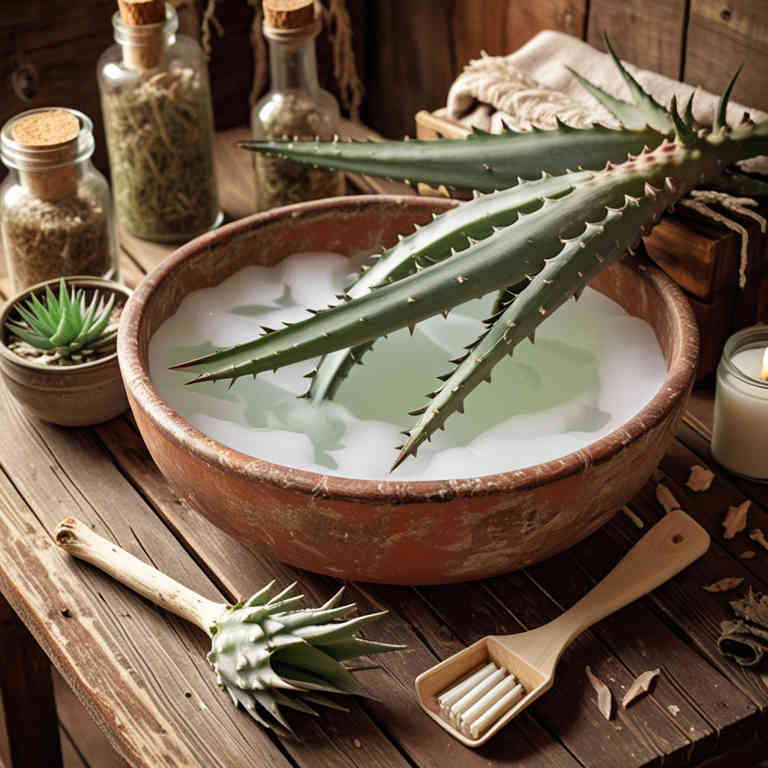Aloe barbadensis bath for medicinal use

Aloe barbadensis bath is a traditional herbal preparation made from the gel extracted from the leaves of the Aloe barbadensis plant, commonly known as aloe vera.
It is used in herbalism for its soothing and moisturizing properties, which can help to calm irritated skin and promote hydration. The bath is typically prepared by mixing aloe gel with water, creating a gentle solution for soaking. This preparation is valued for its ability to alleviate skin conditions such as eczema, psoriasis, and burns.
In herbal medicine, it is also believed to have anti-inflammatory and antioxidant benefits that support overall skin health.
Uses
Aloe barbadensis bath has been used to soothe skin conditions and promote healing for centuries.
Historically, it was utilized in ancient Egypt for its purported rejuvenating properties and was often applied to the skin during rituals and daily hygiene. In traditional medicine systems like Ayurveda and Chinese medicine, aloe was valued for its cooling and detoxifying effects, particularly for treating burns and inflammatory skin disorders. Modern uses include its incorporation into bath products to moisturize, reduce inflammation, and enhance skin texture, supported by its natural emollient and antioxidant properties.
Today, it remains a popular ingredient in skincare routines for its gentle, therapeutic benefits.
Benefits
Aloe barbadensis bath has health benefits such as soothing skin irritation, promoting hydration, and reducing inflammation.
The gel from the Aloe plant contains antioxidants and anti-inflammatory compounds that can help calm redness and irritation. It is particularly beneficial for individuals with sensitive or eczema-prone skin. Regular use of an Aloe bath may also aid in detoxification and improve overall skin texture.
This natural preparation is a gentle and effective way to support skin health and well-being.
Constituents
Aloe barbadensis bath active constituents include polysaccharides, enzymes, vitamins, minerals, and anthraquinones.
These components work together to soothe the skin, reduce inflammation, and promote hydration. Polysaccharides help strengthen the skin's barrier function, while enzymes aid in the removal of dead skin cells. Vitamins such as A, C, and E contribute to skin repair and protection against oxidative stress.
Anthraquinones have mild laxative properties and may support digestive health when used in bath form.
Preparation
To make Aloe barbadensis bath, start by selecting a fresh Aloe vera leaf, preferably from a mature plant, and carefully wash it under running water.
Using a sharp knife, slice the leaf lengthwise to expose the gel inside, then scoop out the gel and remove any brown outer layers. In a mixing bowl, combine the Aloe gel with a few drops of essential oil such as lavender or peppermint for added fragrance and therapeutic benefits. Pour the mixture into a warm bath and soak for 15 to 30 minutes to enjoy its soothing and moisturizing effects.
This natural bath preparation helps to hydrate the skin, reduce inflammation, and promote a sense of relaxation.
Side Effects
Aloe barbadensis bath may lead to skin irritation, allergic reactions, or digestive issues if ingested.
It is commonly used for its soothing and moisturizing properties, helping to relieve dryness and inflammation. However, prolonged use can cause dependency or reduce the skin's natural barrier function. Some individuals may experience a burning sensation or redness when applying it to sensitive areas.
It is important to consult a healthcare professional before using aloe baths, especially for those with existing skin conditions or allergies.